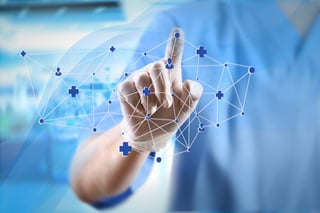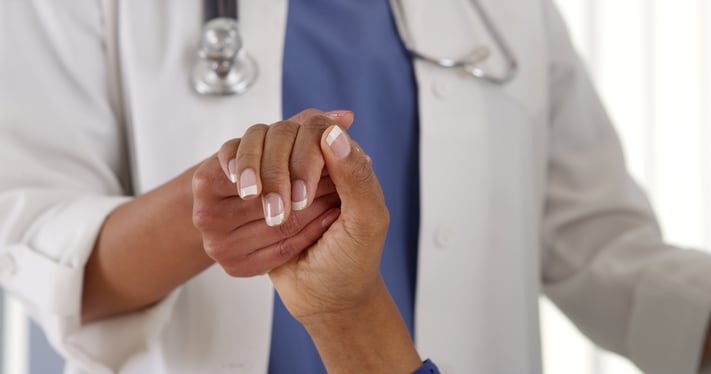A diverse range of breakthrough technologies are doing more than streamlining healthcare; these emerging technologies have the potential to fundamentally change the way medicine is practiced. Rather than simply inventing new technology to address healthcare pain points, these technologies will enhance existing healthcare procedures by applying established technology to the healthcare sphere.
In order for these new technological applications to take root, however, patients and clinicians need to be primed to accept and trust these tools. As the millennial generation takes the reigns, the landscape of healthcare may be set to go virtual.

In 3 Trends Are Reshaping Healthcare IT, Keveh Safavi points out that, “While tools like electronic health records (EHR) are now accepted and mainstream, there are more wide-ranging, IT-driven opportunities still to be grasped.” Applying non-medical IT to medical questions is an interesting approach. Healthcare innovation is typically created to tackle treatment challenges, but by reversing the methodology and applying established and powerful IT tools to previously accepted limitations of healthcare procedures, there are numerous advantages to be had.
For example, by applying the proven technology behind social networks to healthcare, patients can collaborate with other doctors, other patients dealing with similar issues, and so forth. Safavi explains, “Networks such as Facebook, the most visited site in the US, have helped establish online communities of engaged users.” If utilized in a healthcare capacity, the applications could have an industry-wide impact. Through “content creation, idea sharing, and self-service,” accessibility to healthcare information becomes as simple as logging into an online medical community. Safavi explains that, in such a scenario, “users feel more engaged and in control, creating a feeling of ownership within the larger organization.”
This is becoming a more pronounced issue as preferences of the millennial generation are beginning to shape overall demand in every vertical. In The Millennial Impact on Healthcare Tech: Convenience Rules, Alicia Vellante explains that “Millennials’ unique exposure to technology provides them with new and different views on health than previous generations.” While a new perspective is inevitable with each new generation accustomed to various technologies or sensibilities, with millennials, the key is convenience and accessibility.
Vellante points out that, according to a PNC (PNC Financial Services Group) survey, “millennials are less likely to interact with their primary care physicians than baby boomers due to lack of convenience.” For example, “Millennials are twice as likely to visit a retail clinic or acute care facility because it is easier seeing a doctor on a lunch break than making an appointment.” In sum, “millennials are all about the route with the least friction.” Offering patients instantaneous advice from a medical practitioner in addition to social support is exactly what young patients want, and the networking technology is established and available to reapply to such uses.
As millennials mature into the market, how they want to manage their healthcare and interact with their doctors is going decide the direction in which healthcare innovation goes. The trust in technology is not something new that needs to be sold; it’s already the way millennials do business. “People of all ages use technology to manage their health, but millennials are at the top of this list, having grown up with the technology,” says Vellante. Having already become accustomed to instant accessibility, millennials are going to be demanding the same IT standard from their healthcare.
This is not only possible, but available. Safavi mentions gaming as an established IT industry that could be utilized for healthcare purposes. He describes, “Gaming is an established Internet activity with huge potential. Healthcare professionals, as seen through Wii Fit Plus, a popular exercise system developed by Nintendo, have begun to exploit people’s natural tendency to play games to improve cognitive skills and change behavior.” By engaging individuals in a technology they already feel comfortable and excited by and retooling it for health purposes, patients—especially millennial patients—are likely to embrace the innovation rather than reject it for its novelty.
Andrew Meola provides even more exciting examples of IT transforming healthcare for the better. His BI Intelligence article, Internet of Things in Healthcare: Information Technology in Health, Meola describes portal technology for online access to one’s medical records, home monitoring that can notify a doctor if a patient forgets to take their medication, and smart beds that will adjust according to the unique body type of a patient.

Through personalization and convenience, Meola explains, “more connection means more accessible data and better healthcare for patients.” Better healthcare, after all, is the primary goal. Under previous models, taking all a patient’s lifestyle variables into consideration for care may have seemed daunting—if not an impossible—task, but by letting these new technologies do the heavy lifting, clinicians can focus less on the data organizing minutia and more on targeted care.
While not everyone will be ready for the incredible changes coming to healthcare, they key will be making those IT options available and ready for the millennial patients and consumers. As Safavi states, “in practice, the challenge is to embrace new technologies in the context of what patients actually want, rather than what practitioners want to use.” If patients are demanding that healthcare catch up to the world of interconnected IT we live in, so goes the healthcare industry. Fortunately, much of the technology is there to be used for the good of patients everywhere.

